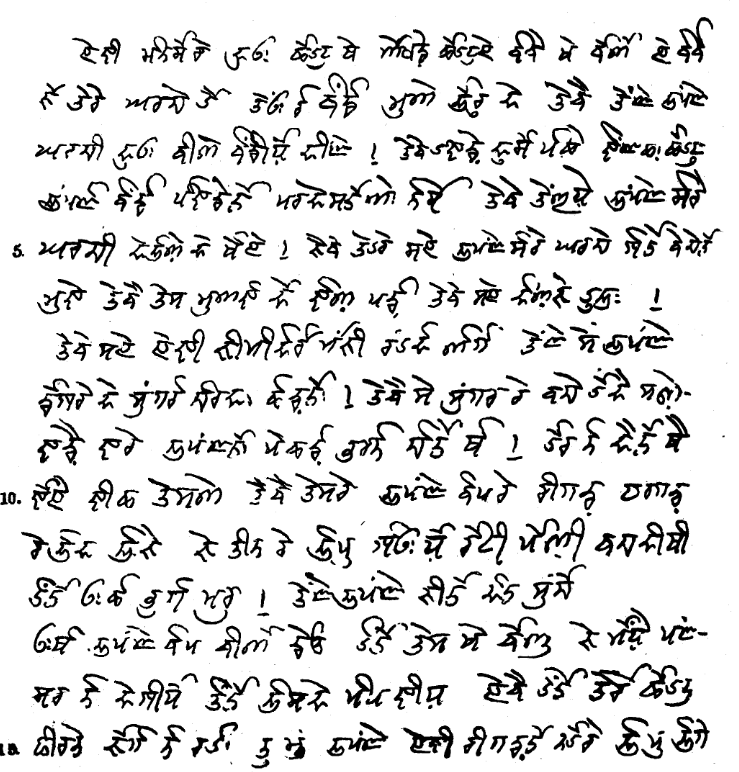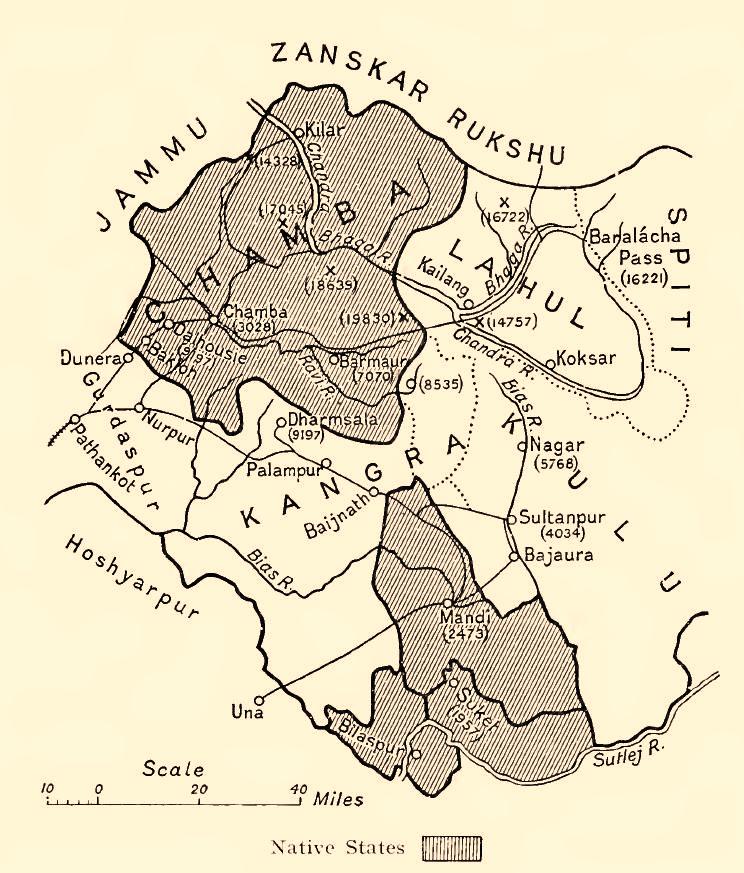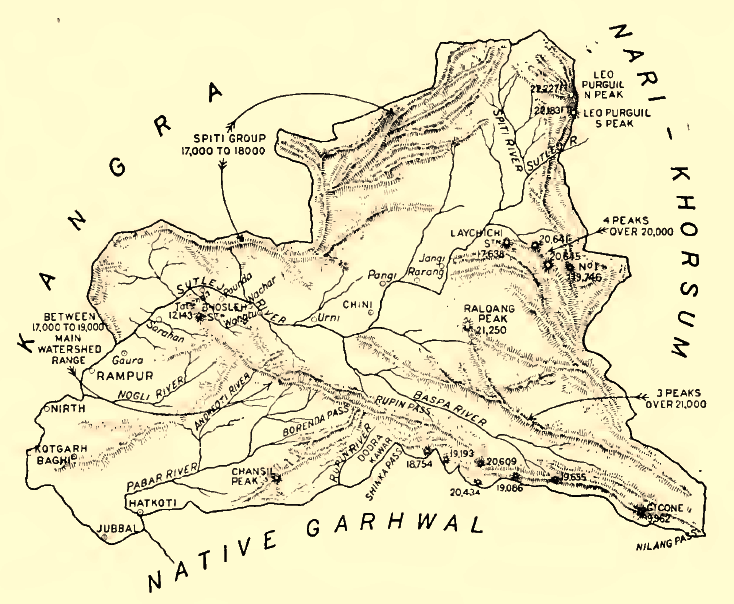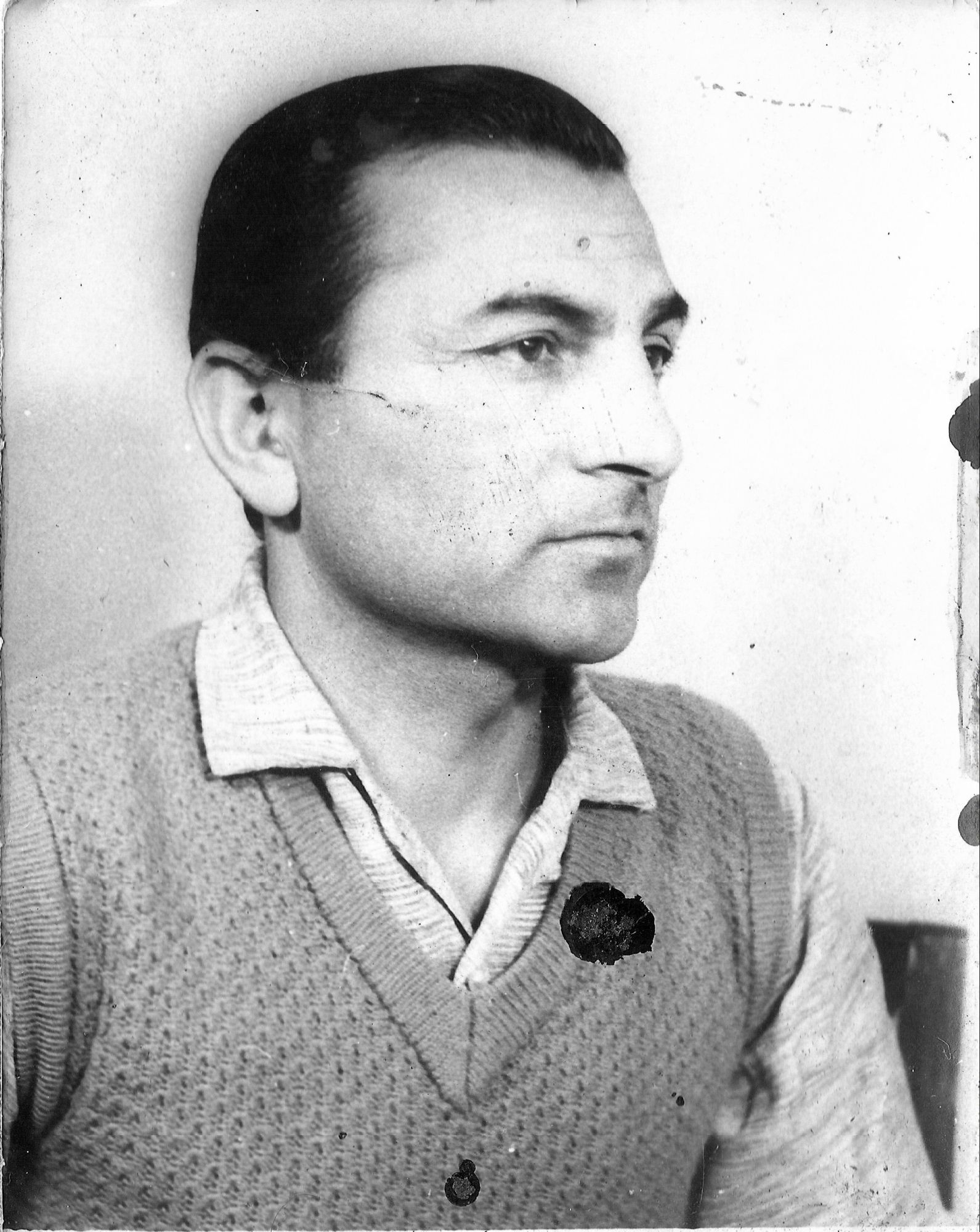|
Nawar Valley
Tikkar (also called Nawar Valley) is a sub-tehsil which falls under Rohru tehsil in Shimla district of Himachal Pradesh state, India. It is east of the district headquarters and the state capital Shimla city. The area pin code is 171203 and the postal head office is situated at Tikkar town. Tikkar is surrounded by Nankhari Tehsil towards the west, Chauhara Tehsil towards the north, Jubbal Kotkhai Tehsil towards the west. Shimla, Solan Solan is a city in the Indian state of Himachal Pradesh and the district headquarters of Solan district. It is located south of the state capital, Shimla. Solan has an average elevation of . The city is situated between Chandigarh (joint capi ..., Nahan, Kalka are the nearby cities from here. It comes under Shimla Lok Sabha constituency, Shimla parliamentary constituency for Lok Sabha and Jubbal-Kotkhai Assembly constituency, Jubbal Kotkhai assembly constituency for Himachal Pradesh Vidhan Sabha. Nearby villages include Badshal, Samra, Da ... [...More Info...] [...Related Items...] OR: [Wikipedia] [Google] [Baidu] |
Himachal Pradesh
Himachal Pradesh (; ; "Snow-laden Mountain Province") is a state in the northern part of India. Situated in the Western Himalayas, it is one of the thirteen mountain states and is characterized by an extreme landscape featuring several peaks and extensive river systems. Himachal Pradesh is the northernmost state of India and shares borders with the union territories of Jammu and Kashmir and Ladakh to the north, and the states of Punjab to the west, Haryana to the southwest, Uttarakhand to the southeast and a very narrow border with Uttar Pradesh to the south. The state also shares an international border to the east with the Tibet Autonomous Region in China. Himachal Pradesh is also known as , meaning 'Land of Gods' and which means 'Land of the Brave'. The predominantly mountainous region comprising the present-day Himachal Pradesh has been inhabited since pre-historic times, having witnessed multiple waves of human migrations from other areas. Through its history, the ... [...More Info...] [...Related Items...] OR: [Wikipedia] [Google] [Baidu] |
Kalka
Kalka is a town in the Panchkula district of Haryana, India. It is near Panchkula city. The name of the town is derived from the Hindu goddess Kali. It is situated in the foothills of the Himalayas and is a gateway to the neighbouring state of Himachal Pradesh. It is on the National Highway 22 between Chandigarh and Shimla, and it is the terminus of the Kalka-Shimla Railway. To the south of Kalka is Pinjore, and the industrial village of Parwanoo (Himachal Pradesh) is to the north on the NH 22. Railways and Industrial development has led to a continuous urban belt from Pinjore to Parwanoo, but Kalka gained major economic benefits due to only highway until 2010, shimla. It is the tehsil of 253 nearby sub villages. Nearby is Chandimandir Cantonment, where the Western Command of the Indian army is based. In 2013, the municipal committee of Kalka was dissolved and the administration was reassigned to Panchkula Municipal Corporation. History The town takes its name from Kalika m ... [...More Info...] [...Related Items...] OR: [Wikipedia] [Google] [Baidu] |
Himachali Cap
Himachali cap (Bushehri topi, Pahari topi, Kinnauri topi) is a distinctive Headgear, headdress associated with Himachal Pradesh#Culture, Himachal Pradesh's culture. It is a part of the traditional dress of many Central Pahari, Pahari inhabitants. History The Himachali cap was historically related to Kinnaur district, Kinnaur and reached other parts of Himachal Pradesh via princely state of Bushahr and Kullu. The weaving style and materials used for these caps differ from each other. The typical green colored Kinnauri/Bushahri cap is also worn in the adjoining areas of Garhwal Himalayas, specially in Dehradun (Jaunsar-Bawar), Uttarkashi and Tehri Garhwal. A similar, but different variety of red colored cap is worn in Uttarkashi and the neighboring areas of Garhwal (not to be confused with red colored Dhumal cap). These caps are more prevalent in the upper districts of Himachal and Garhwal. In Garhwal these caps are also known as Sikoli. Material and Shape Himachali caps are one ... [...More Info...] [...Related Items...] OR: [Wikipedia] [Google] [Baidu] |
Mahasu Pahari Language
Mahasu Pahari (Takri: ) is a Western Pahari (Himachali, Takri: ) language spoken in Himachal Pradesh. It is also known as Mahasui or Mahasuvi. The speaking population is about 1,000,000 (2001). It is more commonly spoken in the Himachal Pradesh, Shimla (Simla) and Solan districts. It is to be known that Shimla and Solan were parts of the old Mahasu district. Himachal Pradesh State on 1 September, 1972 reorganised the districts dissolving Mahasu district. The Solan district was carved out of Solan and Arki tehsils of the then Mahasu district and tehsils of Kandaghat and Nalagarh of the then Shimla District of Punjab. Area According to different locations, the language has developed several dialects. Lower Mahasu Pahari (Baghati, Baghliani, Kiunthali), Upper Mahasu Pahari (Rampuri, Rohruri, Nawari, Jubbali, Shimla Siraji, Sodochi). The Kiunthali variety appears to be understood by others, and their attitude toward it is favorable. Rampuri is also called Kochi; Rohruri is also ... [...More Info...] [...Related Items...] OR: [Wikipedia] [Google] [Baidu] |
Punjab Province (British India)
Punjab was a province of British India. Most of the Punjab region was annexed by the East India Company in 2 April 1849, and declared a province of British Rule, it was one of the last areas of the Indian subcontinent to fall under British control. In 1858, the Punjab, along with the rest of British India, came under the direct rule of the British Crown. It had an area of 358,354.5 km2. The province comprised four natural geographic regions – ''Indo-Gangetic Plain West'', ''Himalayan'', ''Sub-Himalayan'', and the ''North-West Dry Area'' – along with five administrative divisions – Delhi, Jullundur, Lahore, Multan, and Rawalpindi – and a number of princely states. In 1947, the Partition of India led to the province's division into East Punjab and West Punjab, in the newly independent dominions of India and Pakistan respectively. Etymology The region was originally called Sapta Sindhu,D. R. Bhandarkar, 1989Some Aspects of Ancient Indian Culture: Sir William Meyers ... [...More Info...] [...Related Items...] OR: [Wikipedia] [Google] [Baidu] |
Simla Hill States
The Hill States of India were princely states lying in the northern border regions of the British Indian Empire. History During the colonial Raj period, two groups of princely states in direct relations with the Province of British Punjab became part of the British Indian Empire later than most of the former Mughal Empire, in the context of two wars and an uprising. For its princely rulers the informal term Hill Rajas has been coined. It does not apply to other native hill country princes such as the Rawat of Rajgarh. After the independence and split-up of British India, the Hill States acceded to the new Dominion of India and were later divided between India's constituent states of Punjab (proper), Haryana and Himachal Pradesh. Simla Hills 28 princely states (including feudatory princes and zaildars) in the promontories of the western Himalaya were named after Shimla as the Simla Hill States. These states were ruled mainly by Hindu Rajputs. Three quarters of the ... [...More Info...] [...Related Items...] OR: [Wikipedia] [Google] [Baidu] |
Bushahr
Bushahr, also spelt as 'Bashahr' and 'Bussahir' or 'Bushair' was a Rajput princely state in India during the British Raj. It was located in the hilly western Himalaya promontory bordering Tibet in the northern part of colonial Punjab region. The territory of this former state is now part of Kinnaur and Shimla districts of the present Himachal Pradesh state. The erstwhile Bushahr state was traversed by the Sutlej river. It was bordered on the west by the Kulu, Lahaul and Spiti states and by Tehri Garhwal on the east. It had an area of . History The erstwhile Bushahr state was occupied by a Gorkha king from central Nepal from 1803 to 1815. Ranjit Singh, the ruler of the Sikh state in the Punjab, intervened in 1809 and drove the Nepalese army east of the Satluj river. A rivalry between Nepal and the British East India Company over the annexation of minor states bordering Nepal eventually led to the Anglo-Nepalese War (1815–16) or the Gurkha War. Both parties eventually sig ... [...More Info...] [...Related Items...] OR: [Wikipedia] [Google] [Baidu] |
Princely State
A princely state (also called native state or Indian state) was a nominally sovereign entity of the British Raj, British Indian Empire that was not directly governed by the British, but rather by an Indian ruler under a form of indirect rule, subject to a subsidiary alliance and the suzerainty or paramountcy of the the Crown, British crown. There were officially 565 princely states when India and Pakistan became independent in 1947, but the great majority had contracted with the viceroy to provide public services and tax collection. Only 21 had actual state governments, and only four were large (Hyderabad State, Mysore State, Kashmir and Jammu (princely state), Jammu and Kashmir State, and Baroda State). They Instrument of accession, acceded to one of the two new independent nations between 1947 and 1949. All the princes were eventually pensioned off. At the time of the British withdrawal, 565 princely states were officially recognised in the Indian subcontinent, apart from t ... [...More Info...] [...Related Items...] OR: [Wikipedia] [Google] [Baidu] |
British Raj
The British Raj (; from Hindi ''rāj'': kingdom, realm, state, or empire) was the rule of the British Crown on the Indian subcontinent; * * it is also called Crown rule in India, * * * * or Direct rule in India, * Quote: "Mill, who was himself employed by the British East India company from the age of seventeen until the British government assumed direct rule over India in 1858." * * and lasted from 1858 to 1947. * * The region under British control was commonly called India in contemporaneous usage and included areas directly administered by the United Kingdom, which were collectively called British India, and areas ruled by indigenous rulers, but under British paramountcy, called the princely states. The region was sometimes called the Indian Empire, though not officially. As ''India'', it was a founding member of the League of Nations, a participating nation in the Summer Olympics in 1900, 1920, 1928, 1932, and 1936, and a founding member of the United Nations in San F ... [...More Info...] [...Related Items...] OR: [Wikipedia] [Google] [Baidu] |
Himachal Pradesh Vidhan Sabha ...
The seat of the Vidhan Sabha is at Shimla, the capital of the state. The Vidhan Sabha comprises 68 Members of Legislative Assembly, which include 68 members directly elected from single-seat constituency. Its term is 5 years, unless sooner dissolved. Members of Himachal Pradesh Legislative Assembly History Himachal Pradesh was the first state in India to launch paperless legislative assembly . List of assemblies List of Speaker and Deputy Speaker List of Leader of House List of Leader of Opposition See also *Government of Himachal Pradesh *13th Legislative Assembly of Himachal Pradesh References Himachal Pradesh Election Results {{Authority control Himachal Pradesh Himachal Pradesh Himachal Pradesh (; ; "Snow-laden Mountain Province") is a state in the northern part of India. Situated in the Western Himalayas, it is one of the thirteen mountain states and is characterized by an extreme landscape featuring several peaks ... [...More Info...] [...Related Items...] OR: [Wikipedia] [Google] [Baidu] |
Jubbal-Kotkhai Assembly Constituency
Jubbal-Kotkhai Assembly constituency is one of the 68 constituencies in the Himachal Pradesh Legislative Assembly, covering the area of Jubbal, Kotkhai and Nawar. Jubbal Kotkhai constituency is a part of Shimla Lok Sabha constituency. Members of Legislative Assembly Election candidates 2022 Election results 2021 by-election 2017 See also * Jubbal Kotkhai * Shimla district * List of constituencies of Himachal Pradesh Legislative Assembly A ''list'' is any set of items in a row. List or lists may also refer to: People * List (surname) Organizations * List College, an undergraduate division of the Jewish Theological Seminary of America * SC Germania List, German rugby union ... References External links * {{coord, 31.11, 77.67, display=title Assembly constituencies of Himachal Pradesh Shimla district ... [...More Info...] [...Related Items...] OR: [Wikipedia] [Google] [Baidu] |
Lok Sabha
The Lok Sabha, constitutionally the House of the People, is the lower house of India's bicameral Parliament, with the upper house being the Rajya Sabha. Members of the Lok Sabha are elected by an adult universal suffrage and a first-past-the-post system to represent their respective constituencies, and they hold their seats for five years or until the body is dissolved by the President on the advice of the council of ministers. The house meets in the Lok Sabha Chambers of the Sansad Bhavan, New Delhi. The maximum membership of the House allotted by the Constitution of India is 552 (Initially, in 1950, it was 500). Currently, the house has 543 seats which are made up by the election of up to 543 elected members and at a maximum. Between 1952 and 2020, 2 additional members of the Anglo-Indian community were also nominated by the President of India on the advice of Government of India, which was abolished in January 2020 by the 104th Constitutional Amendment Act, 2019. The ... [...More Info...] [...Related Items...] OR: [Wikipedia] [Google] [Baidu] |





